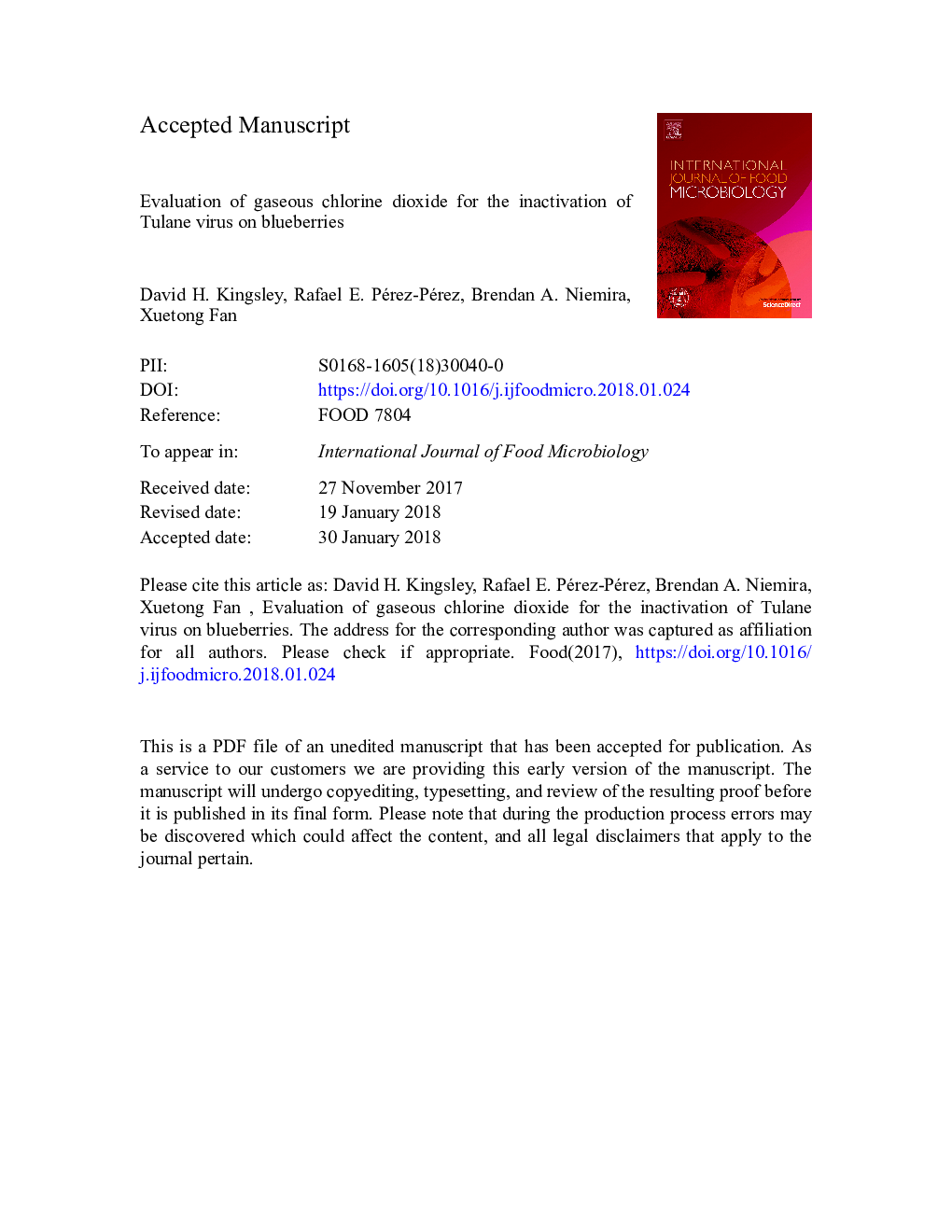| Article ID | Journal | Published Year | Pages | File Type |
|---|---|---|---|---|
| 8844221 | International Journal of Food Microbiology | 2018 | 24 Pages |
Abstract
To determine the effectiveness of gaseous chlorine dioxide (gClO2) against a human norovirus surrogate on produce, gClO2 was generated and applied to Tulane virus-coated blueberries in a 240â¯ml-treatment chamber. gClO2 was produced by an acidifying sodium chlorite solution. Initial assessments indicated that blueberries treated with gClO2 generated from â¤1â¯mg acidified sodium chlorite in the small chamber appeared unaffected while gClO2 generated from â¥10â¯mg of acidified sodium chlorite solution altered the appearance and quality of the blueberries. Treatments of inoculated blueberries with gClO2 generated from 0.1â¯mg sodium chlorite reduced the virus populations by >1 log after exposure for 30 to 330â¯min. For the 1â¯mg sodium chlorite treatments, the virus populations were reduced by >2.2 log after 15â¯min exposure and to non-detectable levels (>3.3 logs reductions) after 180â¯min exposure. Measured concentrations of gClO2 peaked in the treatment chamber at 0.9â¯Î¼g/l after 10â¯min for 0.1â¯mg treatments and 600â¯Î¼g/l after around 20â¯min for 1â¯mg treatment. Overall results indicate that gClO2 could be a feasible waterless intervention for blueberries and other produce.
Related Topics
Life Sciences
Agricultural and Biological Sciences
Food Science
Authors
David H. Kingsley, Rafael E. Pérez-Pérez, Brendan A. Niemira, Xuetong Fan,
